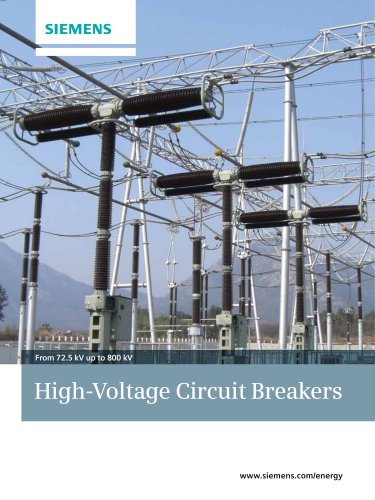 Website:
Siemens High-voltage – Power transmission
Website:
Siemens High-voltage – Power transmission
Group: SIEMENS
Transforming future trends into innovations: Siemens Alternative Insulating Liquid Transformers
2Pages
Catalog excerpts

siemens.com/energy/transformers Transforming future trends into innovations: Siemens Alternative Insulating Liquid Transformers Fit for the future Transformers form an important part of all power distribution networks. They are often located where environmental protection and fire prevention are crucial. That is why Siemens increased its research on nonmineral transformer insulating liquids. These alternative insulating liquids are an investment in a safer, more ecofriendly future. Areas of use In ecologically sensitive locations, specific regulations apply. Transformer units filled with alternative insulating liquids are particularly suitable for installation: • Near rivers and lakes • Near drinking and groundwater reserves • At high altitudes (above 3000 meters). Reasons: environmental sensitivity and difficulties regarding soil disposal • Wherever stringent fire safety is required Siemens expands its portfolio Environmentally friendly and more fireresistant insulating liquids Four types of insulating liquids Mineral oil is the most widely used liquid for transformer insulation and for heat transfer. Its main disadvantages are its limited biodegradability, a low fire point and the fact that the resource is not renewable i.e. limited. Silicone liquid is fully synthetic, has a high ignition temperature, a selfextinguishing behavior and the best thermal stability of the four insulating liquids stated. The disadvantages are high viscosity at higher temperatures, poor lubrication properties and limited biodegradability. Synthetic ester liquids are derived from chemicals. At room temperature, the viscosity of synthetic ester liquids is about four times higher than that of mineral oil. The flash and fire points of synthetic esters are higher than those of mineral oil. Natural ester liquids are made of plant seed oils (e.g. soybean, canola and sunflower). These can be broken down into saturated (chemically stable but highviscosity), single, double and triple unsaturated fatty acids (lower viscosity but unstable in oxidation). The main advantages are significantly higher flash and fire points and the best biodegradability of all the aforementioned insulating liquids. Advantages of insulating liquid alternatives Compared to mineral oil, all alternative insulating liquids: • Offer higher flash/fire points • Possess better biodegradability Silicone liquid offers: • best thermal stability • self extinguishing behavior Synthetic ester: • has higher oxidation stability than natural ester • is strongly hygroscopic, can absorb large quantities of moisture while retaining its insulating properties • shows better cold temperature performance than natural ester • is readily biodegradable Natural ester: • experiences less paperaging than mineral oil • shows higher flash and fire points than synthetic ester • as well as best renewability and is • readily biodegradable
Open the catalog to page 1
Credit for our research: S iemens alternative insulating liquid transformers – references The challenge of change – Siemens puts alternatives to the test Advantage biodegradation The Siemens Transformers R&D-depart ment research shows: biodegradation of esters is much better compared to mineral oil or silicone liquid. Small power transformers • Up to 12.5 MVA, 72.5 kV • Natural/synthetic ester, ilicone s • About 8000 units per year Natural ester Synthetic ester Mineral oil Silicone fluid Ongoing Development • Further verification of dielectric strength • Discharge and partial discharge...
Open the catalog to page 2All Siemens High-voltage – Power transmission catalogs and technical brochures
-
SVC PLUS®
1 Pages
-
Dead tank compact
1 Pages
-
High-voltage surge arresters
112 Pages
-
SURGE FOR railway applications
16 Pages
-
High-Voltage Compact Switchgear
12 Pages
-
PORTABLE POWER SOLUTIONS
12 Pages
-
High-Voltage Circuit Breakers
15 Pages
Archived catalogs
-
High-voltage cable systems
4 Pages
-
Power generation
20 Pages
-
Steam Turbines
6 Pages
-
Gas Turbines
8 Pages




























